To hear extracts from all the movements from Claude Bolling's 'Concerto for Classic Guitar and Jazz Piano Trio', go to iTunes or follow 'Eklectica' link.
Claude Bolling is a French pianist/composer, born in Cannes in 1930.
Bolling was a child prodigy and as a 14 year old boy won an amateur jazz contest in Paris.
By the following year he had formed his own group which was influenced by the music of Duke Ellington, who had become a friend and mentor.
Bolling has also been hugely influenced by New Orleans jazz.
By 1948 Bolling was playing with American musicians such as Lionel Hampton, Roy Eldridge and Kenny Clark.
In 1955 he formed his own orchestra, known as the, 'Show Bizz Band', which continued performing into the 1980's.
He has written numerous film scores and is particularly well known for his semi-classical compositions.
The idea of associating jazz and classical music has often inspired a diverse range of musical personalities. George Gershwin, Dave Brubeck and Jacques Loussier, to name a few.
Bolling's first fusion was in the 1970's when he composed, 'Suite for Flute and Jazz Piano', which quickly became a favourite for both jazz and classical listeners.
The following, 'Suite for Violin and Jazz Piano', commissioned and recorded by Pinchas Zukerman in 1977, was also hugely successful.
But it was Bolling's third work of this kind, 'Concerto for Classic Guitar and Jazz Piano Trio', which interests us today.
Of the concerto Bolling said, "The writing needed very special attention so that the piano would not predominate over the guitar."
This is a known problem when composing for guitar and piano as they do not naturally work well together.
Jazz pianists frequently have to reduce their left hand activities to allow the guitar a sonic space in which to be heard.
Bolling certainly achieved his objective in the composition of this concerto.
The 'Concerto for Classic Guitar and Piano Jazz Trio', is a rarely recorded, and substantial work in seven movements.
Robin has collaborated with a group of musicians from diverse musical backgrounds to bring you 'Eklectica'.
They are:
Robin Hill - Guitar/elctric guitar/electric sitar/percussion
Daniel Bath - Piano/Vocals
Maurice Cheetham - Percussion
Dave Lynane - Bass
I have heard 'Eklectica' perform all the music on this CD live, and it really is a fabulous, and highly varied concert.
Today we shall look at the seven movements of the, 'Concerto for Classic Guitar and Jazz Piano Trio', of which Robin gave the UK premiere.
1) Hispanic Dance.
This movement has a South American theme in 5/4 time, which later alternates with the more seductive jazz feel of 4/4 time. This allows for much improvisation on the piano, and as the movement progresses, both the guitar and the piano alternating and sharing the statements of the opening theme.
The guitar part is demanding and we are reminded of Dave Brubeck's 'Blue Rondo a la Turk'.
2) Mexicaine.
The second movement, Mexicaine, also contrasts two themes. It is said that Mexican street musicians inspired the 5/8 rhythm that dominates much of this movement.
Initially the guitar focuses on a nostalgic lament, before the piano, bass and drums develop into a more jazz influenced melody.
3) Invention.
Invention begins with a baroque dialogue between guitar and piano whilst the bass and drums play an insistent ostinato.
The piano and bass then improvise in turn against the main theme, until the guitar reappears to resume their interplay which culminates in the conclusion of the movement.
4) Serenade.
The guitar opens the fourth movement with slow arpeggios developed harmonically. This continues as the piano enters with the theme and the bass and drums enter softly, one by one, to give the movement a bossa nova feel.
5) Rhapsodic.
This movement commences with the guitar playing a long series of perfect major and minor triads until a new pattern develops, commencing with the double bass, then piano, then drums, which is suggestive of a ballad.
6) Africaine.
Here there are two principle themes, fast paced and strongly accented. The first incantatory, the second more melodic, but, rhythmically complex. Robin improvised his own cadenza which heralds the return of the main theme.
An excellent sense of timing is required to draw on both the classic and the the jazz elements in this movement.
7) Finale.
As the title suggests, this is the finale to the whole piece, a reprise of the six preceding movements, and a mixing of the two main themes from 'Hispanic Dance' and 'Mexicaine', to give a fitting and brilliant finale.
To hear extracts from all the movements follow the 'Eklectica' link.
Reviews
'As always, it was sheer pleasure to observe Robin Hill's remarkable fluent technique: everything looks easy when he plays it.' Colin Cooper- Classical Guitar Magazine -----
'Wonderful for their (Hill & Wiltschinsky) precision, touch and clarity of sound... refined virtuosity, the achievement of a long interpretive process.' Il Giornale D'Italia (Rome) -----
'I loved your CD and thought your technique and performance were fabulous...' Rick Wakeman
Subscribe to:
Post Comments (Atom)

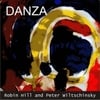



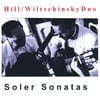








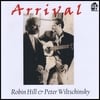
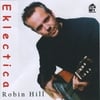
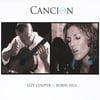
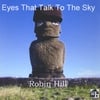
No comments:
Post a Comment